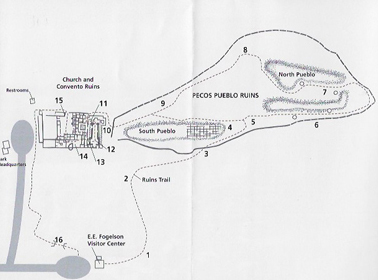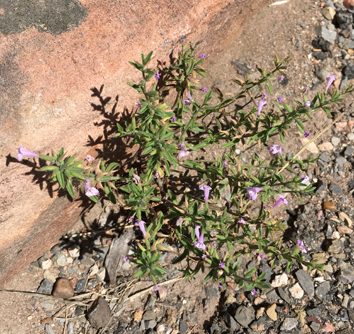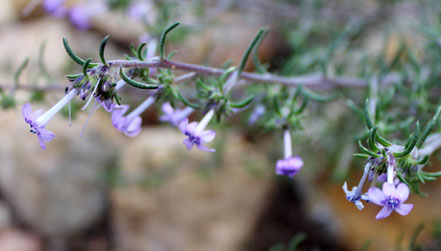
Location
On trail before #1 (N35D33'.528 X W105D41'16.572)
Flowers first observed: 7/22/17
Plant w/Flowers

The Flowers

Distribution
"Found in open sites from desert shrublands up into woodlands and in montane forests, from 2,000-8,500 ft (610-2591 m); flowers July-October. Distribution: s CO, AZ, NM; south to n MEX Notes: Often distinguished by its open, diffuse habit, with many little purple flowers." (SEINet)
Description
"Short-lived perennial herb, 15-50 cm tall; stems unbranched or branched at the base, with short to long, glandular to non-glandular hairs. Leaves: Alternate along the stems; blades simple and linear (upper) or pinnately dissected into 3-5 linear lobes (lower), glabrous to sparsely short pilose or glandular. Flowers: Showy and purple, in leafy, diffuse terminal panicles, these often one-sided, with subsessile flowers on short, lateral branches; calyx consisting of 5 glandular-pubescent, awn-tipped sepals, 4-8 mm long, connected to each other by papery membranes; corolla rotate to salverform and 5-lobed, pale violet to purplish, the corolla tube 5-15 mm long and the throat 1-2.5 mm wide, corolla lobes subequal, the lower 3 partly united, often with purple flecks; anthers and stigma exserted beyond corolla. Fruits: Capsule 4-7 mm long, with 2-8 seeds per locule." (SEINet)
Ethnobotanical Uses
Medicine:
"Navajo, Ramah Ceremonial Medicine Decoction of plant used as a ceremonial medicine. Zuni Analgesic Powdered, whole plant applied to face for headache. Dermatological Aid Powdered plant applied to wounds. Pulmonary Aid Crushed blossoms smoked in corn husks to 'relieve strangulation." (Moerman 277)
Internet Links